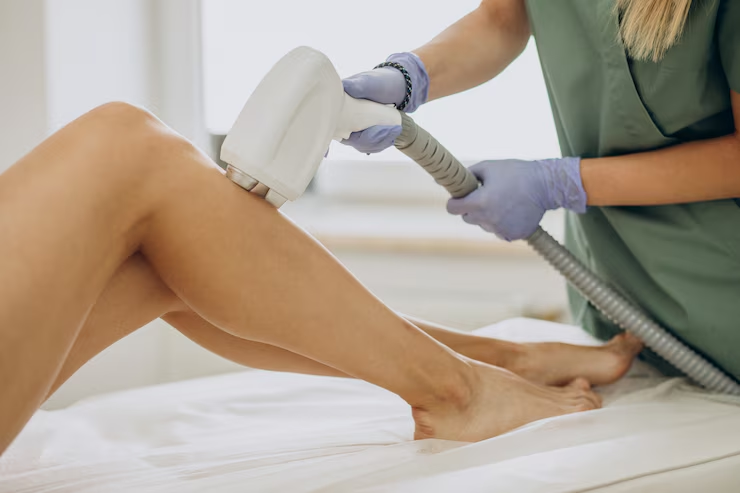What to Expect During Mole Removal?
- Get link
- X
- Other Apps
Mole removal is a straightforward medical procedure often performed to eliminate moles for cosmetic or medical reasons. Whether it’s a small skin-colored mole or a larger, more prominent one, mole removal is carried out with precision to ensure minimal discomfort and optimal results. Understanding what happens during the process can help you feel prepared and informed before undergoing the procedure. If you’re considering Mole Removal in Dubai, rest assured that expert care and advanced techniques are available to meet your expectations.
Initial Consultation and Assessment
Before the actual procedure begins, an initial consultation with the doctor is essential. During this session, the doctor carefully examines the mole to determine its type, size, location, and any associated risks. They will also discuss your medical history and ask if you’ve noticed changes in the mole’s size, shape, or color. This step is crucial for assessing whether the mole is benign or requires further testing.
Preparing for the Procedure
On the day of the procedure, the treatment area is thoroughly cleaned to reduce the risk of infection. A local anesthetic is then administered to numb the area, ensuring the process is pain-free. The type of mole removal technique chosen will depend on factors such as the mole’s depth and location, as well as your preferences and the doctor’s recommendations.
Techniques Used for Mole Removal
Shave Excision
In this method, the doctor uses a small blade to shave the mole off at skin level. It is commonly used for moles that protrude above the skin. Since the mole is removed without deep incisions, this technique often leaves minimal scarring.
Surgical Excision
For moles that are deeper or have a higher chance of regrowth, surgical excision is the preferred option. The doctor carefully removes the mole and a small margin of surrounding tissue. This technique may involve stitches to close the wound, particularly for larger moles or those located in sensitive areas.
Laser Removal
Laser removal is ideal for small, flat moles or those located in delicate areas. This non-invasive technique uses laser energy to break down mole cells, causing them to fade gradually. Multiple sessions may be required for complete removal.
Cryotherapy
Cryotherapy involves freezing the mole using liquid nitrogen. The doctor applies the freezing agent directly to the mole, causing it to blister and eventually fall off. This method is often used for superficial moles.
The Procedure
Once the area is numb, the doctor begins the mole removal procedure using the chosen technique. The process typically lasts between 15 minutes and an hour, depending on the method and the size of the mole. Throughout the procedure, the doctor ensures you’re comfortable and may explain what they’re doing step-by-step for reassurance.
After the mole is removed, the doctor may apply an antibiotic ointment and cover the area with a sterile dressing. If stitches are required, you’ll be informed about proper aftercare and when to return for suture removal.
Post-Procedure Care
Proper aftercare is crucial to promote healing and prevent complications. The doctor will provide detailed instructions, which may include:
- Keeping the area clean and dry.
- Changing the dressing as directed.
- Avoiding excessive sun exposure to the treated area.
You’ll also be advised to monitor the site for any signs of infection, such as redness, swelling, or discharge. Regular follow-ups may be scheduled to ensure proper healing.
Benefits of Mole Removal
Mole removal offers numerous advantages, whether for medical or cosmetic purposes:
- Improved skin appearance by eliminating unwanted moles.
- Prevention of potential health risks if the mole is found to be cancerous.
- Boosted confidence, especially if the mole was in a noticeable area.
- Relief from irritation caused by moles in friction-prone areas.
FAQs
Is mole removal painful?
Mole removal is generally not painful as the area is numbed with a local anesthetic. You may feel slight pressure during the procedure, but no pain.
How long does it take to recover from mole removal?
Recovery typically takes one to two weeks, depending on the removal method and the size of the mole. Following aftercare instructions speeds up healing.
Can a removed mole grow back?
While rare, a mole can regrow if some of its cells remain beneath the skin. Regular follow-ups with your doctor can address such cases.
Are scars common after mole removal?
Scarring depends on the mole's size, removal technique, and individual healing ability. Doctors aim to minimize scarring by using precise techniques and providing aftercare tips.
When can I return to normal activities after mole removal?
You can usually resume normal activities immediately, but avoid strenuous exercises and direct sun exposure to the treated area for a few days.
Conclusion
Mole removal is a safe and effective procedure performed by skilled doctors using advanced techniques. Understanding the process, from the initial consultation to post-procedure care, ensures you’re well-prepared and confident in your decision. If you’re considering professional mole removal in Dubai, the expertise and precision available in the city make it an excellent choice.
- Get link
- X
- Other Apps




Comments
Post a Comment